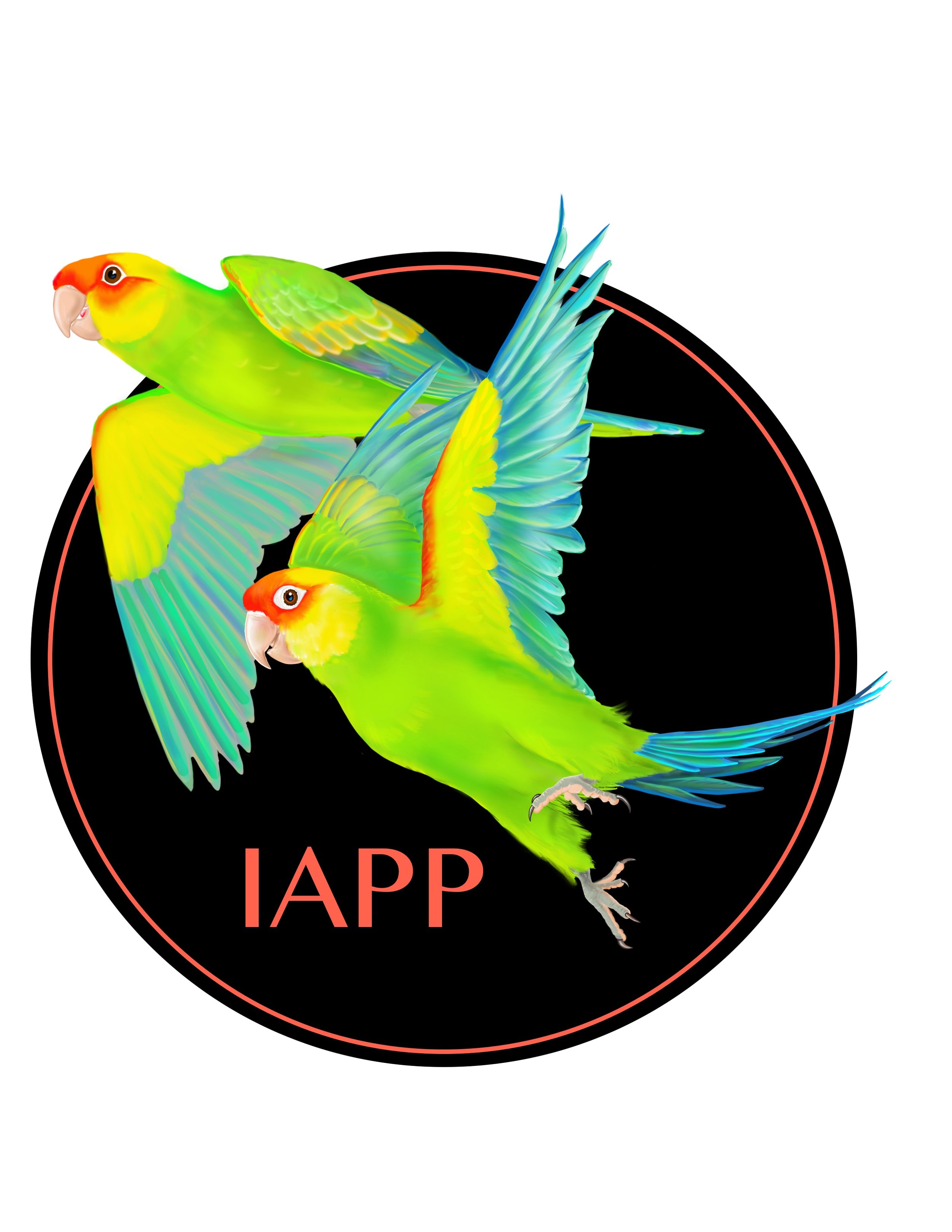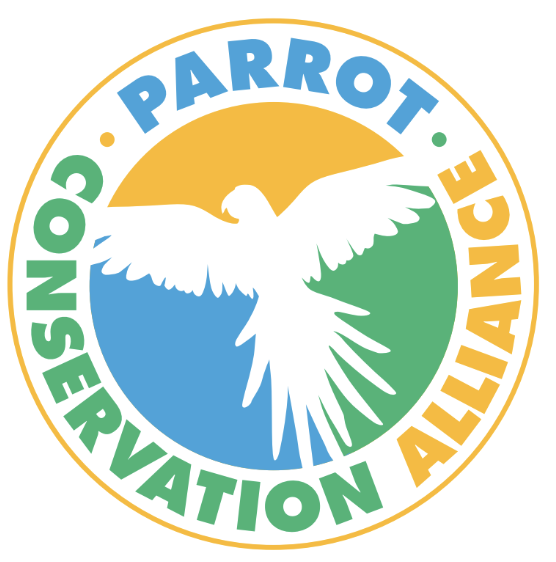Your Biting, Screaming, Difficult Parrot
By Karen Windsor
Foster Parrots, Ltd.
Biting is not an arbitrary behavior. Parrots make a choice to bite - or not. Your parrot is trying to express something and is using his biting as a means of communication and control. Sometimes hormones kick in seasonally to contribute to a bit of "edginess" in birds. Sometimes there are other factors or changes in routine, relationships or environment that can contribute to frustration or anger, and result in a biting bird. Has something in your parrot’s world changed? Has another pet been added or subtracted? Has a new human come into your life? Are you working more? Is he being caged too often?
One thing that all parrots benefit from is a well-structured, very consistent daily routine so that they know what to expect from you - and what is expected of them - day after day. Your bird should know that there are periods in every day when he can depend on having one-on-one interaction time with you, and that there are other times when he'll have to be in his cage and/or be expected to entertain himself. He should get up every morning at the same time and be able to have breakfast with you and hang out, play and be around you. There should be a cage with a play top or perches and a play area in the main part of the house where all the activity happens so that he can be where the people are. If you have to leave for work he should know that this is the time he needs to entertain himself or watch the world through a window or listen to music... When you come home every day at the same time he should know this is when he comes out of his cage and will have time with you. He should be able to hang out while you're working around the house or making dinner. Birds are social eaters, so being able to join you for dinner will be very fulfilling for him. There should be some quality one-on-one play time or cuddling time - maybe in front of the TV if that's what you like to do. Then every night at 7:00 or 8:00 it should be "bedtime for birds". A parrot should be able to go to bed in a quiet place away from the activity of the home - just like a child. Like children, parrots need 10 hours of uninterrupted sleep every night.
Your routine with your parrot doesn't have to be exactly like this. Your days must be structured in the way that works for you, but the important thing is that there IS structure and a routine he can anticipate, and that the routine takes his needs into consideration - and meets those needs.
In addition to establishing a consistent daily routine, you can employ some positive reinforcement training that can help your parrot understand the rules and anticipate rewards and a more fulfilling relationship with you if he's being a good bird. Dr. Susan Friedman, Lara Joseph and Barbara Heidenriech are all leading behaviorists whose information can be accessed on line.
In the meantime you may be able to start employing some positive reinforcement training strategies right away....
Find that one little treat that your parrot craves and desires over all other things. That will become your "currency". It should be something that can be offered in small portions/pieces that he can eat fairly quickly – and then want more! It should never be available to him unless he is being trained or rewarded for good behavior. You can start by just slipping him the treats here and there when he's being sweet so that he'll begin to associate you and the positive situations with those treats. And you can say, "Treat!" and "Good Bird". He'll begin to learn the word associations. He'll want the treat. But if he misbehaves - flies at you or lunges, then leave the room immediately. He gets no treat. He'll know you have the treat, but he didn't get it because he behaved in a way that made you leave. Return in just a few minutes and offer him a treat... If he lunges or misbehaves again he does not get the treat, and he loses you.
If offering a treat (reward) by hand represents a dangerous situation for you initially, just being able to place a treat in front of him without him going after you will be progress! You can slowly work up to him taking the treat from your hand. Then perhaps you can use that same kind of positive reinforcement training to get him to step up on a stick or your hand without biting
We normally do not advocate wing-clipping. But if flight, at this difficult time, contributes to his violent behavior, then a "discipline clip" could be useful - just until he learns the rules.
These training sessions can actually become an anticipated and fun part of his daily routine that he will find fulfilling. But a big part of successful training and maintaining a good relationship with your parrot is that you learn to read him and his body language. A lot of behavior training involves training the human to respond appropriately to a parrot's cues and to avoid responding to certain cues that reinforce bad behavior. If your parrot demonstrates that he is not feeling receptive to you or a training session, don’t force it. Give him time to change his mood. Read his body language. Take notice of the postures and movements that precipitate aggressive behavior and respect those cues.
Birds who are caged too frequently sometimes exhibit aggression to express their frustration. They’re angry! They understand the function of a cage when it becomes a prison. Birds are territorial by nature and can love their cages, but sometimes the difference between a cage that is a haven and a cage that is a prison is as simple as an open door. We encourage people to create “an environment” on and around the cage in order to expand real estate and provide opportunities for climbing, exploring, exercise and play. A network of branches arranged on top of the cage, a hanging play frame suspended above, t-stands fashioned from natural wood, a level play-top can all enhance a parrot’s environment. Position the parrot’s environment in front of a window so he can watch the world outside. Provide foot toys, puzzle toys, boxes (if you can safely do so), natural rope swings…
Sometimes having the choice to be in or out of the cage, having a choice of toys and activities and just being around where the humans are hanging out can be very satisfying to a parrot. Being able to make a simple choice is something that most parrots in captivity don’t have the opportunity to exercise. Their lives are entirely in our hands. They don’t get to choose their guardians, and they have no choice when they lose a home and a guardian they may love. They don’t get to choose when they eat or what they eat or how they live. They have no choice when they are separated from their parents or from bonded mates. Sometimes choosing to bite is the only control they may feel they have. Giving parrots back their power and providing some options in their daily lives can have a positive effect on avian behavior.
Parrots who scream excessively or bite, or who exhibit stereotypic behavior or self-pluck or mutilate are expressing some level of distress, and one of the most frequent origins of distress in captive parrots is inadequate social support. Parrots are social on the same scale as humans, elephants, non-human primates, and dolphins – all of which are highly intelligent, highly involved species who are fundamentally wired to be connected in a meaningful way to other living beings. Social isolation in gregarious species has a profound impact psychologically and developmentally, and is perhaps the most prevalent form of abuse of parrots kept domestically. Yet we fail to see the abuse and the neglect even when it’s sitting right in front of us in a cage. Alone. Without a meaningful social connection in its life.
We would like to suggest that people begin to shift their perception of what it means have a parrot in one’s home, and to make that relationship less about what one hopes to get from the parrot and more about what one can do to meet the needs of an extraordinary wild animal in a home environment. And with social support being the most basic and essential element in the life of a parrot, we urge people to keep more than one parrot. When birds have meaningful relationships with other birds, it enhances the quality of life for the birds and relieves human care-givers of the burden of being the sole focus for social fulfillment. Parrots who are able to enjoy the companionship of bonded mates or a small flock can certainly love their humans as well, but when their humans are unavailable they can still enjoy socially enriched lives.
In conclusion, parrots who exhibit negative behaviors are trying to communicate their needs. We need to learn to listen. Predictable routines and positive reinforcement based training can help parrots know what to expect and also to know what is expected of them. Dynamic, enriched environments, freedom from caging and the ability to exercise choice can help quell both rage and boredom in the life of a bird. Most of all, fulfilling a parrot's need for social support and meaningful conspecific or inter-species relationships can be fundamental to achieving happiness and harmony for parrots in captivity.







